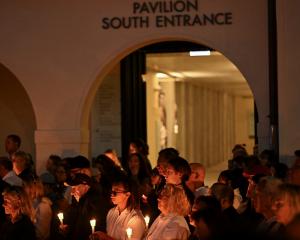Red hot lava from a volcano that devastated the Spanish island of La Palma reached the Atlantic Ocean late on Tuesday evening, nine days after it started to flow down the mountain, wrecking buildings and destroying crops.
Big clouds of white steam billowed up from the Playa Nueva area as the lava made contact with the ocean, according to Reuters images. Photographs shared on social media showed the lava piling up near a cliff.
Officials said the lava flowing into the sea could trigger explosions and clouds of toxic gases and the Canary Islands' emergency service urged those outdoors to immediately find a safe place to shelter. No injuries have been reported.
"When the lava reaches the sea, the lockdown must be strictly observed," Miguel Angel Morcuende, director of the Pevolca response committee, said earlier on Tuesday.
Lava has been flowing down the volcano's western flank toward the sea since September 19, destroying almost 600 houses and banana plantations in La Palma, which neighbours Tenerife in the Canary Islands archipelago off the North African coast.
Thousands have been evacuated and three coastal villages were locked down on Monday in anticipation of lava meeting the ocean and releasing toxic gases.

But authorities cannot determine how long the eruption will continue. For several hours on Monday, the eruption slowed to a near halt before roaring back into life in the evening.
"We are still waiting on whatever the volcano wants to do," said Miguel Angel Morcuende, director of the Pevolca response committee. "When the lava reaches the sea, the lockdown must be strictly observed."
However, bathers on Tazacorte beach, a few kilometres away from the likely impact zone, remained calm.
"I'm not afraid. The beach is relaxing," Maria Lourdes, who lived through La Palma's last big eruption in 1971, told Reuters as a few bathers and families with young children strolled along the black sands.
Further inland, one resident who was evacuated last week from the village of Tacande de Arriba was delighted to find his house still standing and his pet cats unscathed.
"It's a good feeling, a fantastic feeling," said Gert Waegerle (75), who fled the advancing lava with his five turtles on Friday but had to leave the cats behind.
"I am super happy because in the end, everything turned out fine."













